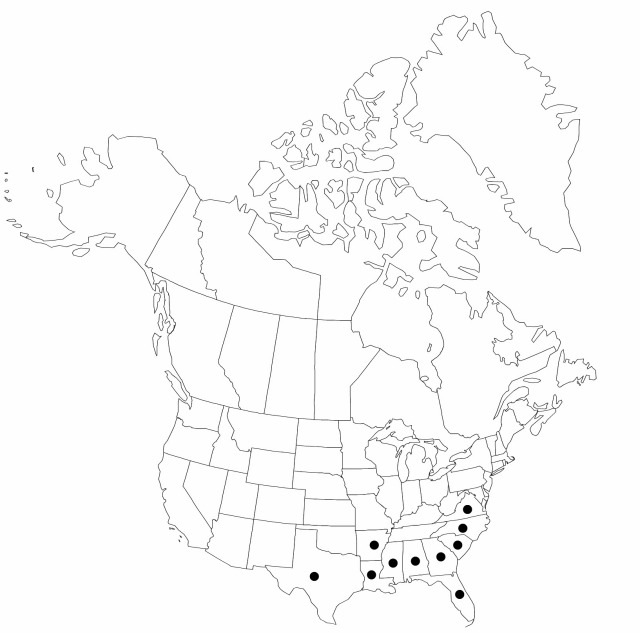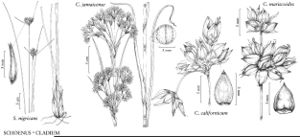Cladium jamaicense
Inst. Rei Herb. 1: 362. 1766.
Rhizomes to 20 cm × 10 mm. Culms 1–3 m × 5–10 mm. Leaves: blades flat to broadly V-shaped, 5–11 mm wide, margins and midvein abaxially harshly scabrous with teeth visible to unaided eye. Inflorescences terminal (or lateral and terminal), 30–50 cm; 1st, 2d, 3d, and some 4th order branches, branches slightly flexuous. Spikelets in groups of 2–3 (–6), narrowly ellipsoid to lanceolate; floral scales 5–6, the proximal chestnut-brown, ovate to oblong-lanceolate, 2.5–3 × 2 mm, midvein conspicuous, lateral-veins weak; stamens 2; anthers 2 mm, connective apices 0.1–0.2 mm; styles 2–2.5 mm; stigmas 1–1.5 mm. Achenes light greenish brown, ovoid, 2 × 1 mm, glossy, base vaguely 3-lobed, truncate, not flared or discoid, apex acute, irregularly rugulose longitudinally.
Phenology: Fruiting spring–summer.
Habitat: Coastal brackish and fresh marshes
Elevation: 0–100 m
Distribution

Ala., Ark., Fla., Ga., La., Miss., N.C., S.C., Tex., Va., Mexico, West Indies, Central America, n South America
Discussion
Cladium jamaicense is important as the dominant species in much of the Florida Everglades (K. K. Steward and W. H. Ornes 1975).
Selected References
None.
Lower Taxa
"shortened" is not a number.
